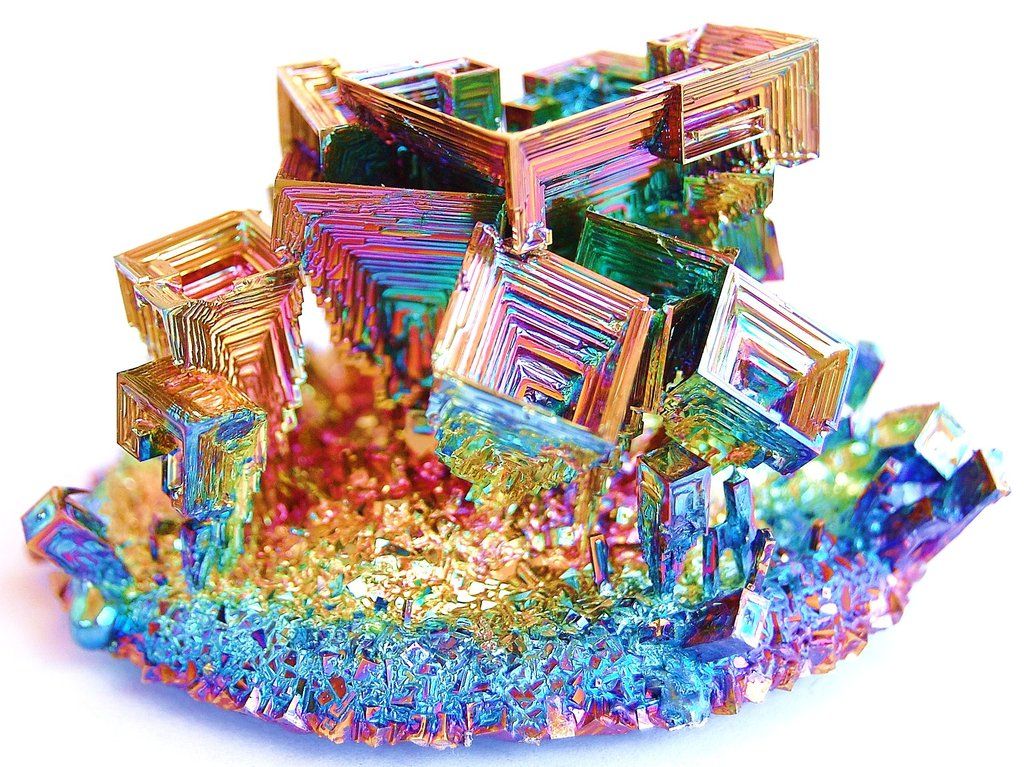Bismuth is a chemical element with symbol Bi and atomic number 83. Commonly known as bismuth, it is a post-transition metal and one of the pnictogens with chemical properties resembling its lighter neighbors in the periodic table, arsenic and antimony. Some key properties of bismuth make it stand out from other metals.
Properties and Structure
Bismuth has a number of unique physical properties that make it very different from other metals. It is a brittle metal with a silver-pink color and has the highest thermal conductivity of any metal. It is also highly diamagnetic and has one of the lowest values of electrical conductivities and thermal conductivities among metals. It crystallizes in a rhombohedral lattice structure and has the lowest melting point of any metal, lower than sodium or potassium. The crystal structure of bismuth is similar to structures found in other semimetals such as antimony, tin and lead.
At low temperatures, bismuth exhibits a preponderance of brittle properties rather than ductility. However, at higher temperatures above 70 °C, it shows a highly plastic behavior and ability to flow or change shape. This unusual temperature dependence is partly responsible for the sometimes dramatic eutectic reactions that bismuth metal undergoes with many metals and metalloids.
Uses and Applications
Beyond its unique physical properties, bismuth has found several industrial applications due to its low melting point, easy casting abilities, and stability against oxidation. It is used mainly in alloys with other metals for safety-related applications where its toxicity is not an issue. Some key uses of bismuth include:
– Pharmaceuticals: Bismuth subsalicylate, marketed under brand names like Pepto-Bismol, is a common antacid and is the most widely used bismuth-containing medication. It helps treat diarrhea, indigestion and upset stomach.
– Cosmetics: Bismuth oxychloride is used as a pearlescent pigment in cosmetics and nail polish products due to its pearly/iridescent colors.
– Firearms: Bismuth alloys are used in bullets and shot shells as substitutes for lead. They have higher densities than other non-toxic substitutes but lower density than lead.
– Industrial Applications: Alloys of bismuth such as bismuth-tin and bismuth-cadmium have low melting points and are used for solders, fusible alloys and firing ranges.
Health Effects and Toxicity
While bismuth itself is not toxic, some of its compounds are poisonous if ingested or inhaled in large amounts. Topical exposure to bismuth presents very little health risk. The main toxicity concerns are:
– Bismuth subsalicylate in excessive doses can potentially cause salicylate poisoning symptoms like tinnitus, dizziness and vomiting.
– Inhalation of bismuth oxide or metallic bismuth dust/fumes can lead to nausea, diarrhea or coughing due to lung irritation. Chronic exposure damage the kidneys.
– Ingestion of large amounts of bismuth salts like bismuth subnitrate can cause vomiting, abdominal pains or greyish discoloration of tongue.
However, when used properly under medical supervision or in pharmaceutical/cosmetic products in small doses, bismuth compounds present very little health risks. The no observed adverse effect level for ingested bismuth is considered to be over 50mg/kg per day.
Sources and Mining
Naturally occurring bismuth is quite rare in the earth’s crust with an estimated global abundance of 0.0001%. The key commercial bismuth ores are bismuthinite (Bi2S3), bismite (BiOCl) and native bismuth. Some other bismuth-containing ores are bismutite, bismuth ochre and bismite.
Major bismuth-producing countries are China, Mexico, Peru, Bolivia, Canada and Germany. China is the largest producer and consumer of bismuth. Ores are mined mostly as byproducts from mining operations extracting other metals. Extraction involves crushing and grinding followed by pyrometallurgical processes like smelting to produce bismuth metal. The global production of bismuth was 8,000 tonnes in 2017.
Bismuth is a post-transition metal with many unique physical and thermodynamic properties that distinguish it from other metals. While naturally rare, it has found several niche industrial and pharmaceutical applications that utilize its properties such as low toxicity, easy casting, high electrical resistance and pearlescent colors of some compounds. With growing uses of bismuth substitutes to replace toxic metals like lead, the production and consumption of bismuth is expected to increase in future years. Further exploration may also uncover more economically viable bismuth deposits aiding in greater industrial adoption



